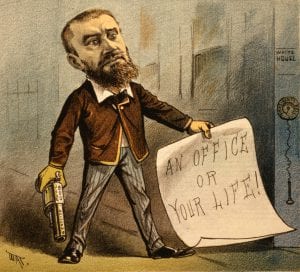Base Metals
Contrarian Thinking: The Power of Challenging the Status Quo
Benefits of Contrarian Thinking Oct 1, 2023 Today, we will talk about contrarian thinking, a powerful tool for decision-making that involves challenging…


Benefits of Contrarian Thinking
Oct 1, 2023
Today, we will talk about contrarian thinking, a powerful tool for decision-making that involves challenging conventional wisdom and questioning assumptions. Contrarian thinking is the act of going against popular opinions or beliefs in the realm of business and investing. Adopting a contrarian approach entails taking positions that oppose the prevailing sentiment in the market. The primary objective of contrarianism is to identify opportunities others may overlook and capitalise on them.
What a fine day for science! A significant advantage of contrarian thinking is that it fosters critical thinking. By scrutinising assumptions and challenging the status quo, individuals can detect flaws in current systems and procedures. This can lead to improvements and innovations that might not have been possible otherwise. Contrarian thinking also helps individuals and organizations identify blind spots. When everyone thinks the same way, missing important information or overlooking potential risks is easy. By adopting a contrarian mindset, individuals can unearth concealed opportunities and risks that may have gone unnoticed.
Another benefit of contrarian thinking is that it can lead to innovation and creativity. By challenging conventional wisdom, individuals can develop new and innovative solutions to problems. This can lead to breakthroughs in technology, business, and other fields. Contrarian thinking also helps individuals and organizations gain a competitive advantage. By taking positions opposite to the prevailing sentiment in the market, contrarians can identify undervalued assets and take advantage of them.
Contrarian Thinking: Unveiling Revolutionary Discoveries
Here are some examples of how contrarian thinking has led to important discoveries and innovations throughout history:
The Earth Revolves Around the Sun, Not Vice Versa
For centuries, the prevailing belief was that the Earth stood at the centre of the universe, with the sun and other planets revolving around it. This geocentric model, proposed by Ptolemy, was widely accepted and considered the truth. However, in the 16th century, Nicolaus Copernicus dared to challenge this long-held belief with his heliocentric model.
Copernicus’s contrarian thinking placed the sun at the centre of our solar system, with the Earth and other planets orbiting around it. This revolutionary idea went against the accepted wisdom of the time and faced significant opposition. Yet, it laid the foundations for a new understanding of our place in the cosmos.
Contrarian thinking, in this context, involved questioning the prevailing consensus and challenging deeply ingrained beliefs. It required Copernicus to challenge the status quo and propose an alternative explanation aligned with his observations and mathematical calculations.
This example serves as a reminder of the power of contrarian thinking in advancing our knowledge and understanding. We open ourselves up to new possibilities and discoveries by questioning established beliefs and challenging conventional wisdom.
In today’s world, contrarian thinking is crucial in various fields, from science and technology to business and social change. It encourages us to question assumptions, explore alternative perspectives, and push the boundaries of what is possible.
So, let us embrace the spirit of contrarian thinking, for it is through challenging the status quo that we can uncover new truths and drive progress in our ever-evolving world.
Contrarian Thinking: Revolutionizing Medicine with Germ Theory
In medicine, contrarian thinking has often led to groundbreaking discoveries that have transformed our understanding of diseases. One such example is the shift from the prevailing belief in miasma theory to the revolutionary concept of germ theory.
Before the development of germ theory, people attributed diseases to miasma, or “bad air.” This theory suggested that foul odours or polluted air caused illnesses. However, in the 19th century, contrarian scientists like Louis Pasteur and Robert Koch challenged this view and proposed that microorganisms, specifically bacteria, were responsible for many diseases.
Louis Pasteur’s experiments played a crucial role in disproving the concept of spontaneous generation, which held that living organisms could arise spontaneously from non-living matter. His work demonstrated that microorganisms in the air could contaminate substances, leading to spoilage and disease. Pasteur’s findings laid the foundation for the understanding that microorganisms played a significant role in spreading diseases.
Robert Koch further advanced the field of germ theory by linking specific bacteria to specific diseases. His groundbreaking research on anthrax, a deadly disease affecting both humans and animals, provided compelling evidence that microorganisms were the causative agents of diseases. Koch’s work not only refuted the miasma theory but also established a framework for identifying and studying disease-causing microorganisms.
The acceptance of germ theory revolutionized medicine and public health practices. It led to significant advancements in disease prevention, diagnosis, and treatment. The understanding that microorganisms could be transmitted from person to person or through contaminated objects paved the way for improved hygiene practices, sterilization techniques, and the development of vaccines and antibiotics.
The contrarian thinking of Pasteur and Koch challenged long-held beliefs and transformed our understanding of diseases. Their contributions laid the foundation for modern medicine and continue shaping our healthcare approach today.
It serves as a reminder that questioning established theories and embracing contrarian thinking can lead to paradigm shifts and significant advancements in scientific knowledge. By challenging the status quo, we open doors to new possibilities and drive progress in the field of medicine and beyond.
Contrarian Thinking: Unveiling the Dynamic Earth with Plate Tectonics
In geology, contrarian thinking has led to transformative breakthroughs, none more significant than the theory of plate tectonics. For much of the 20th century, geologists believed the Earth’s crust was fixed and immovable. However, in the 1960s, scientists, including Harry Hess and Lynn Margulis, proposed a radical new theory that challenged this prevailing belief.
The theory of plate tectonics suggests that the Earth’s crust is divided into several large plates that float and move atop the semi-fluid layer beneath. These plates interact, leading to earthquakes, volcanic activity, and continental drift. This contrarian thinking revolutionized the geology field and provided a comprehensive explanation for various geological processes.
Initially met with skepticism and resistance, the theory of plate tectonics gradually gained acceptance as mounting evidence supported its claims. The discovery of mid-ocean ridges, deep-sea trenches, and the mapping of seismic activity provided compelling evidence for the movement and interaction of tectonic plates.
Plate tectonics became the cornerstone of geology, offering a unifying framework to understand the Earth’s dynamic nature. It explained the formation of mountain ranges, the opening and closing of ocean basins, and the distribution of earthquakes and volcanic activity along plate boundaries.
This contrarian thinking revolutionized our understanding of the Earth’s structure and processes and had profound implications for other scientific disciplines. It provided insights into the evolution of continents, the distribution of species, and even the history of climate change.
The theory of plate tectonics serves as a powerful reminder of the importance of challenging established beliefs and embracing contrarian thinking. By questioning the prevailing wisdom, scientists like Hess and Margulis unveiled a new paradigm that reshaped our understanding of the Earth and its geological history.
Contrarian Thinking: Unveiling the Quantum World
In the early 20th century, physicists faced a problem trying to understand the nature of light and matter. The prevailing belief was that light behaved solely as a wave, while matter was composed of particles. However, through contrarian thinking and groundbreaking discoveries, scientists like Max Planck and Albert Einstein revolutionized physics by developing quantum mechanics.
Max Planck’s solution to the blackbody radiation problem, known as Planck’s quantum hypothesis, proposed that light was emitted and absorbed in discrete packets of energy called quanta. This counterintuitive idea challenged the prevailing wave theory of light and laid the foundation for the concept of quantization.
Building upon Planck’s work, Albert Einstein further expanded the understanding of quantum mechanics by explaining the photoelectric effect. He proposed that light could exhibit both wave-like and particle-like properties, depending on the context. This revolutionary idea defied classical intuition and provided compelling evidence for the existence of photons, discrete particles of light.
The development of quantum mechanics completely transformed our understanding of the physical world. It introduced the concept of wave-particle duality, where particles like electrons and photons could exhibit both particle and wave characteristics. Quantum mechanics also introduced the notion of uncertainty, stating that certain properties of particles, such as position and momentum, cannot be simultaneously known with absolute precision.
The counterintuitive nature of quantum mechanics challenged long-held beliefs and forced scientists to rethink the fundamental principles of physics. It opened up new avenues of research and led to the development of quantum field theory, quantum electrodynamics, and other branches of modern physics.
The impact of quantum mechanics extends far beyond the realm of physics. It has revolutionized technology, enabling the development of quantum computers, lasers, and advanced imaging techniques. Quantum mechanics also plays a crucial role in fields such as chemistry, materials science, and even biology.
The story of quantum mechanics serves as a testament to the power of contrarian thinking in advancing scientific knowledge. By challenging established beliefs and embracing unconventional ideas, scientists have unlocked the mysteries of the quantum world and paved the way for remarkable discoveries and technological advancements.
DNA Structure
James Watson and Francis Crick’s groundbreaking discovery of the structure of DNA indeed challenged the prevailing belief of the scientific establishment at the time. Before their work, it was widely believed that proteins carried genetic information. However, Watson and Crick’s contrarian thinking led them to hypothesize that DNA, which was considered a “boring molecule” by some, held the key to the genetic code.
In 1953, Watson and Crick proposed the double helix structure of DNA, revolutionising our understanding of genetics and laying the foundation for modern molecular biology. Their willingness to think differently and challenge the established beliefs in the scientific community led to one of the most significant discoveries in the history of biology.
The double helix structure of DNA consists of two intertwined strands, with complementary base pairs forming the “rungs” of the ladder-like structure. This discovery provided a mechanism for how genetic information is stored and transmitted, and it opened up new avenues of research in fields such as genetics, genomics, and biotechnology.
Watson and Crick’s work not only elucidated the structure of DNA but also paved the way for further advancements in understanding the mechanisms of DNA replication, transcription, and translation. Their discovery has had profound implications for fields ranging from medicine and agriculture to forensic science and evolutionary biology.
The story of Watson and Crick serves as a powerful reminder of the importance of contrarian thinking in scientific breakthroughs. By challenging the prevailing beliefs and thinking outside the box, they made a transformative contribution to our understanding of life’s fundamental building blocks.
Challenges of Contrarian Thinking:
One challenge is that contrarian views often require more evidence and rationale to be accepted. Since they go against the prevailing wisdom, contrarian ideas are frequently met with scepticism and resistance. Those proposing contrarian perspectives must make a compelling case with robust data and sound logic. Otherwise, their views may be quickly dismissed or ignored.
Another issue is that contrarians can sometimes develop an overly critical mindset. In constantly questioning assumptions and challenging the status quo, they may start reflexively doubting all conventional thinking. Taken too far, this can lead to cynicism, nihilism and an inability to appreciate valid traditions or expertise. Contrarians must be careful not to throw the baby out with the bathwater.
There is also the risk that contrarians become attached to going against the grain for its own sake. In some cases, people adopt contrarian views primarily to stand out or to gratify their self-image as free thinker. However, this motivation does not necessarily lead to thoughtful questioning of ideas on their merits. Authentic contrarian thinking requires open-mindedness, not just reflexive opposition.
Finally, there is the challenge of timing. Often, contrarians are ahead of their time, and widespread vindication of their views comes only years or decades later. The difficulty persists in the face of ridicule and dismissal until the weight of evidence finally shifts. Maintaining conviction and patience in the interim is challenging but crucial work for a contrarian.
Strategies for Effective Contrarian Thinking:
Challenging Assumptions and Biases: Another essential strategy for practical contrarian thinking is problematic assumptions and biases. This can involve asking questions such as “Why do we do things this way?” or “What if we tried something different?” Individuals can better understand situations and make better decisions by challenging assumptions and biases.
Considering Alternative Perspectives: It’s also important to consider alternative perspectives. Individuals can better understand a situation and make better decisions by considering different viewpoints. This can involve seeking out experts’ opinions, consulting with colleagues, or seeking feedback from customers or clients.
Evaluating Risks and Rewards: Finally, assessing risks and rewards is crucial. By weighing a decision’s potential risks and rewards, individuals can make informed decisions that consider the potential consequences. This can involve conducting a cost-benefit analysis, assessing the risk-to-reward ratio and considering the possible long-term effects of a decision.
In addition to these strategies, being open-minded and willing to take risks is essential. Contrarian thinking often involves going against the grain and taking unpopular or unconventional positions. This can be challenging, but it can also lead to significant rewards. By being open-minded and willing to take risks, individuals and organizations can achieve success and make a positive impact in their fields.
Researching and Gathering Information:
Challenging assumptions and biases is a crucial step in making better decisions. By gathering data and information from various sources, individuals can understand a situation more comprehensively and avoid making decisions based on flawed assumptions.
Conducting research, analyzing data, and seeking out expert opinions are effective ways to gather information. Analysis allows individuals to delve deeper into a topic, explore different perspectives, and uncover valuable insights. Analyzing data helps identify patterns, trends, and correlations that can inform decision-making. Seeking out expert opinions provides access to specialized knowledge and expertise, offering valuable guidance and alternative viewpoints.
By scrutinizing assumptions and biases, individuals can identify any flaws or limitations in their thought processes. This involves questioning established beliefs, challenging the status quo, and considering alternative possibilities. It requires an open mind and a willingness to explore different perspectives, even if they may initially seem contrary to one’s own beliefs.
Challenging assumptions and biases allows individuals to break free from limiting thinking patterns and opens up new possibilities. It encourages creativity, innovation, and the exploration of alternative solutions. By embracing a contrarian mindset, individuals can push the boundaries of conventional wisdom and make more informed decisions.
Researching and gathering information from various sources while challenging assumptions and biases is essential for better decisions. It empowers individuals to gain a broader perspective, consider alternative viewpoints, and make choices based on a more comprehensive understanding of the situation.
Considering Alternative Perspectives:
Considering alternative perspectives is a crucial strategy for practical contrarian thinking. Seeking out expert opinions, consulting with colleagues, or gathering feedback from customers or clients can provide valuable insights and help individuals gain a more comprehensive understanding of a situation.
Encouraging diversity of thought is essential to avoid falling into the trap of groupthink and to identify blind spots. Being open-minded allows individuals to consider different viewpoints, even if they contradict their own beliefs or opinions. It helps in challenging assumptions and biases, leading to more well-rounded decision-making.
Additionally, being aware of confirmation bias is crucial. Confirmation bias is the tendency to seek information that confirms one’s existing beliefs while ignoring or dismissing information that contradicts them. Individuals can overcome cognitive biases and make more informed decisions by actively seeking out alternative perspectives and being mindful of confirmation bias.
By considering alternative perspectives, individuals can gain a broader understanding of a situation, uncover new insights, and identify potential risks or opportunities that may have been overlooked. It fosters critical thinking, creativity, and innovation, enabling individuals to make more well-rounded and successful decisions.
Considering alternative perspectives is a valuable strategy for practical contrarian thinking. It helps individuals challenge assumptions, avoid biases, and make more informed decisions that can lead to more tremendous success.
Evaluating Risks and Rewards:
In the realm of contrarian thinking, evaluating risks and rewards takes on heightened significance. Contrarians inherently challenge conventional wisdom, often venturing into uncharted territory where risks and rewards interplay uniquely. This approach involves a nuanced understanding of the potential outcomes.
Delving into the intricacies, individuals embark on a comprehensive assessment of the risk-reward landscape. They navigate through uncertainties, conducting meticulous cost-benefit analyses to decipher the potential payoffs against the inherent uncertainties. A contrarian’s journey involves identifying the hidden gems that conventional thinkers might overlook due to aversion to risk.
Contrarians don’t merely dwell on surface-level rewards; they scrutinize the depths. This entails delving into alternatives and weighing their potential merits against the associated risks. It’s a dynamic equilibrium where audacity meets meticulousness.
Additionally, contrarian thinking stretches beyond the immediate horizon. It encompasses foreseeing future implications that ripple from the chosen path. While conventional thinkers often settle for predictable trajectories, contrarians venture into uncertainty, armed with a willingness to adapt and thrive.
In conclusion, contrarian thinking thrives on a robust evaluation of risks and rewards. It’s a symphony of boldness and caution, where the unconventional path is charted with acumen. As individuals navigate this paradigm, they elevate their decision-making prowess, embracing the potential for exceptional gains while staying mindful of the uncharted territories they tread.
Examples of Successful Contrarian Thinking:
Steve Jobs and Apple’s “Think Different” campaign is indeed an excellent example of successful contrarian thinking. By challenging the status quo and promoting creativity and innovation, Apple was able to revolutionize the technology industry and create iconic products that have shaped our modern world.
Warren Buffet’s investment strategy is another notable example of contrarian thinking. Buffet achieved significant success in the stock market by investing in undervalued companies and avoiding popular trends. His ability to see value where others did not and his long-term perspective have made him one of the most successful investors ever.
Elon Musk’s approach to space exploration is also a prime example of contrarian thinking. By challenging conventional wisdom and taking bold risks, Musk has achieved significant breakthroughs in space technology. His companies, SpaceX and Tesla, have disrupted their respective industries and pushed the boundaries of what was thought possible.
These examples demonstrate the power of contrarian thinking in driving innovation, success, and transformative change. By questioning established norms, challenging assumptions, and thinking outside the box, individuals and organizations can uncover new opportunities and make a lasting impact in their fields.
The Role of Contrarian Thinking in Scientific Discovery:
Contrarian thinking has played a significant role in scientific discovery throughout history. Individuals who challenged conventional wisdom and questioned assumptions have made many scientific breakthroughs. For example, Charles Darwin’s theory of evolution challenged the prevailing belief in creationism and led to significant advances in our understanding of biology and the natural world.
In addition to challenging prevailing beliefs, contrarian thinking can also involve taking risks and pursuing unconventional approaches. For example, Marie Curie’s discovery of radium and polonium involved taking significant risks and pursuing unconventional research methods. Her contrarian approach led to substantial advances in radioactivity and earned her two Nobel Prizes.
Contrarian thinking can also involve questioning established theories and paradigms. For example, Albert Einstein’s theory of relativity challenged the prevailing belief in Newtonian physics and led to significant advances in our understanding of space and time.
Overall, contrarian thinking has played a crucial role in scientific discovery by challenging prevailing beliefs, taking risks, pursuing unconventional approaches, and questioning established theories and paradigms. By embracing contrarian thinking, individuals and organizations can achieve significant breakthroughs and positively impact their fields.
The Impact of Groupthink on Decision-Making:
The sway of groupthink on decision-making underscores the significance of independent thought. This phenomenon propels individuals toward conformity, leading them to align with the collective rather than carving their own intellectual path. In this current, optimal decision-making often falters, and opportunities slip through the cracks of consensus.
Resilient decision-making flourishes when independent thought prevails over the pull of group dynamics. Steering clear of the perils of groupthink demands cultivating a culture of diverse perspectives. It’s an exercise in intellectual diversity where the clash of ideas nurtures innovation.
Diversifying the tableau of thought involves embracing alternative viewpoints. Encouraging the coexistence of dissenting voices invites a harmonious symphony of ideas. Seeking counsel from experts, engaging in discourse with colleagues, and canvassing the sentiments of customers or clients opens doorways to uncharted insights.
The antidote to groupthink is the empowerment of individual intellect. It entails fostering an environment where the courage to dissent and the art of contemplative scrutiny thrive. This culture enables decisions that transcend the limitations of conformity, resonating with the bold rhythms of progress.
In summation, comprehending the impact of groupthink underscores the need for an ecosystem that cherishes the tapestry of distinct perspectives. As individuals cultivate the prowess to stand apart from the collective sway, the symphony of innovative decision-making flourishes, ushering in a landscape rich with unexplored potential.
The Ethics of Contrarian Thinking:
Considering the ethical implications of contrarian thinking is crucial to ensure that decisions are made responsibly, and ethical standards are upheld. Contrarian thought may result in ethical dilemmas, mainly when adopting views that conflict with commonly recognised moral or ethical norms. For example, taking a contrarian approach to environmental issues could be considered unethical if it involves ignoring the potential environmental harm.
One way to address the ethical implications of contrarian thinking is to consider the potential consequences of a decision. This can involve a cost-benefit analysis and considering different options’ potential risks and benefits. It’s also important to consider the possible long-term consequences of a decision and its impact on various stakeholders.
Another way to address the ethical implications of contrarian thinking is to seek out diverse perspectives and engage in open dialogue. By considering different viewpoints and engaging in open dialogue, individuals can better understand a situation and make more informed decisions.
It’s also important to be transparent and accountable for decisions made due to contrarian thinking. This can involve communicating the rationale behind a decision and being willing to accept feedback and criticism.
Conclusion:
Contrarian thinking offers numerous benefits. It involves challenging conventional wisdom and questioning assumptions, fostering critical thinking. Scrutinizing assumptions leads to improvements and innovations that might be overlooked otherwise. Contrarian thinking helps uncover blind spots, revealing concealed opportunities and risks. It also encourages innovation and creativity, driving breakthroughs in various fields. Additionally, it can provide a competitive advantage by identifying undervalued assets.
Historical examples demonstrate the power of contrarian thinking in advancing knowledge. For instance, Copernicus challenged the prevailing belief with his heliocentric model. Pasteur and Koch’s germ theory revolutionized medicine. The theory of plate tectonics transformed geology. In the realm of quantum mechanics, Max Planck and Albert Einstein challenged prevailing beliefs, leading to groundbreaking discoveries. Contrarian thinking has also revolutionized genetics, exemplified by Watson and Crick’s discovery of the DNA double helix.
However, there are challenges. Contrarian views often require strong evidence and rationale to be accepted. They can sometimes lead to an overly critical mindset or be pursued to stand out. Timing is crucial, as contrarians are often ahead of their time, enduring ridicule before vindication.
Successful contrarian thinking strategies involve challenging assumptions, considering alternative perspectives, evaluating risks and rewards, researching and gathering information, and fostering an open mind. Contrarian thinking has been pivotal in technology, investing, and space exploration, driving innovation and transformative change.
In scientific discovery, contrarian thinking challenges established beliefs takes risks, pursues unconventional approaches, and questions existing theories. While groupthink can hinder decision-making by promoting conformity, fostering diverse perspectives is the antidote. Embracing alternative viewpoints and cultivating a culture of dissent leads to more innovative decisions.
Addressing the ethics of contrarian thinking involves considering potential consequences, seeking diverse perspectives, being transparent, and remaining accountable for decisions. Contrarian thinking, when wielded responsibly, can yield profound benefits and drive progress.
FAQs
Q: What is contrarian thinking?
A: Challenging conventional wisdom and questioning assumptions.
Q: What are the benefits of contrarian thinking?
A: Encourages critical thinking, identifies blind spots, and leads to innovation and creativity.
Q: What are the challenges of contrarian thinking?
A: Resistance to change, social pressure to conform, risk of being wrong.
Q: What are the strategies for effective contrarian thinking?
A: Researching and gathering information, challenging assumptions and biases, considering alternative perspectives, and evaluating risks and rewards.
Q: What are some examples of successful contrarian thinking?
A: Apple’s “Think Different” campaign, Warren Buffet’s investment strategy, Elon Musk’s approach to space exploration.
Q: What is the role of contrarian thinking in scientific discovery?
A: Individuals who challenged conventional wisdom have made many scientific breakthroughs.
Q: What is groupthink?
A: A phenomenon where individuals tend to conform to the group’s opinions.
Q: What are the ethics of contrarian thinking?
A: It’s essential to consider the ethical implications of contrarian thinking and to ensure that decisions are made responsibly.
Beyond the Ordinary: Fascinating Articles That Stand Out

Blue Gas Unleashed: Separating Hype from Sustainable Reality

Lagging Economic Indicators: Time to Thrive or Perish

Contrarian Thinking: The Power of Challenging the Status Quo

Why Doesn’t Anybody Help Us Stop Losing Money In The Market

Buy the Dip: Dive into Wealth with this Thrilling Strategy

Risk vs Reward vs Folly: Navigating Investment Choices

Stock Market Basics: Out with the Old, In with the New

Germany’s Economic Woes: The Sick Man of Europe

Mastering Market Moves: The Investor Sentiment Cycle

Seizing the Copper Shortage Opportunity

Inductive vs Deductive Reasoning: Unlocking the Mystery

Market Sell-Off Survival: Act or Perish

Economy: Exploring Different Economic Systems

House Poor: Navigating the Challenges of Rising Housing Cost

Huge Risk to US Economy: Fact or Fiction?
The post Contrarian Thinking: The Power of Challenging the Status Quo appeared first on Tactical Investor.

White House Prepares For “Serious Scrutiny” Of Nippon-US Steel Deal
White House Prepares For "Serious Scrutiny" Of Nippon-US Steel Deal
National Economic Adviser Lael Brainard published a statement Thursday…
How to Apply for FAFSA
Students and families will see a redesigned FAFSA this year. Here’s how to fill it out.
Dolly Varden consolidates Big Bulk copper-gold porphyry by acquiring southern-portion claims – Richard Mills
2023.12.22
Dolly Varden Silver’s (TSXV:DV, OTCQX:DOLLF) stock price shot up 16 cents for a gain of 20% Thursday, after announcing a consolidation of…














